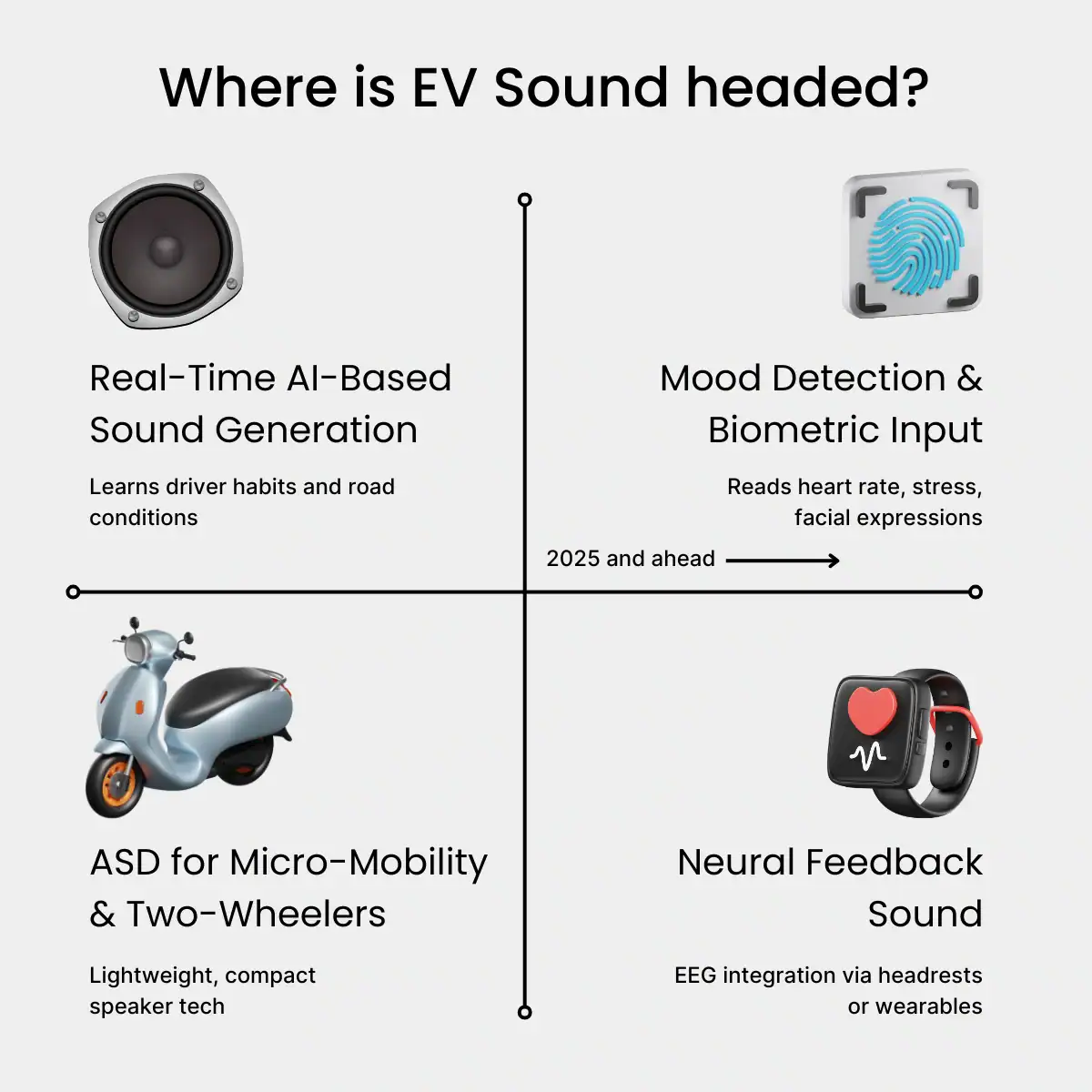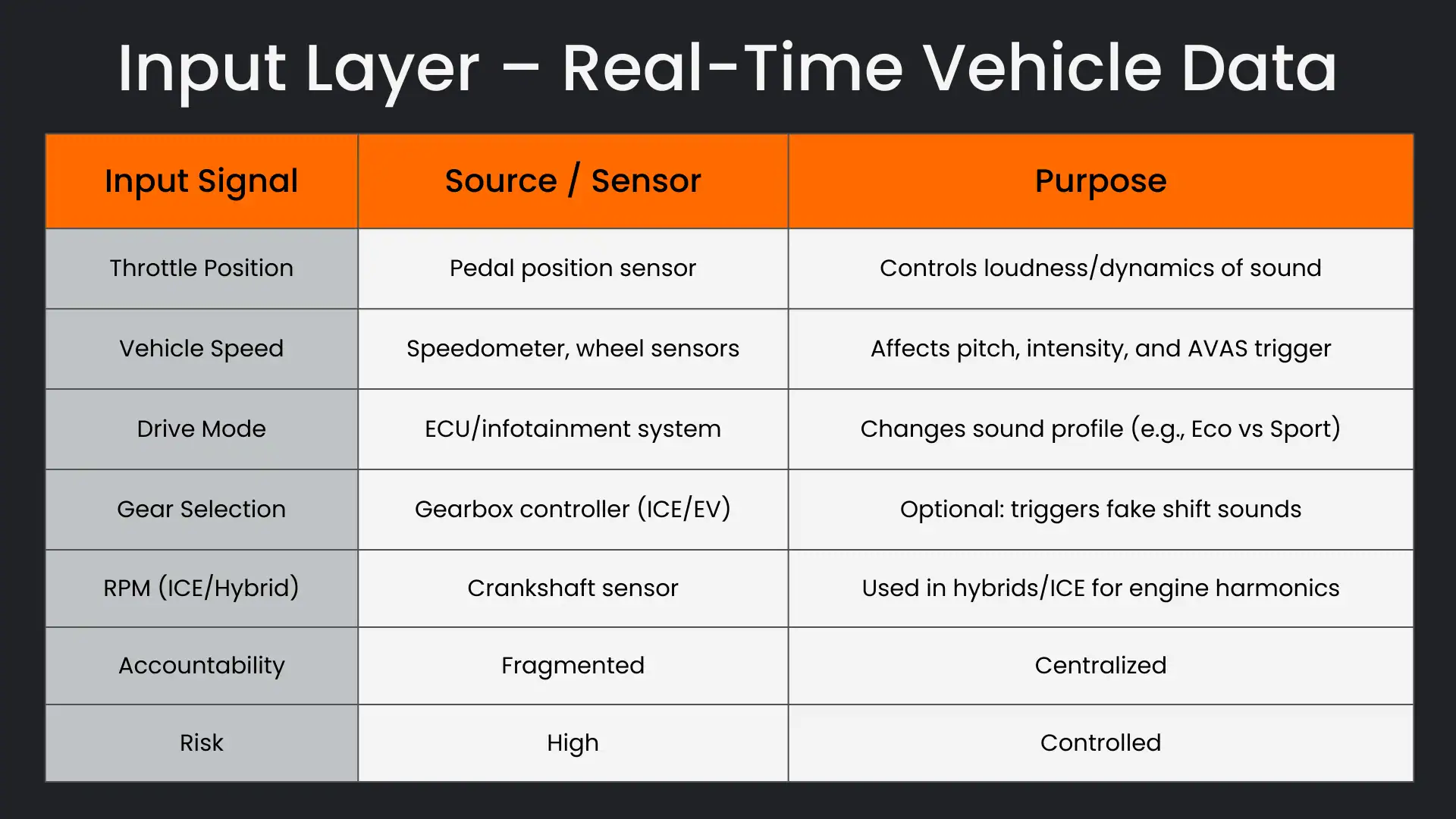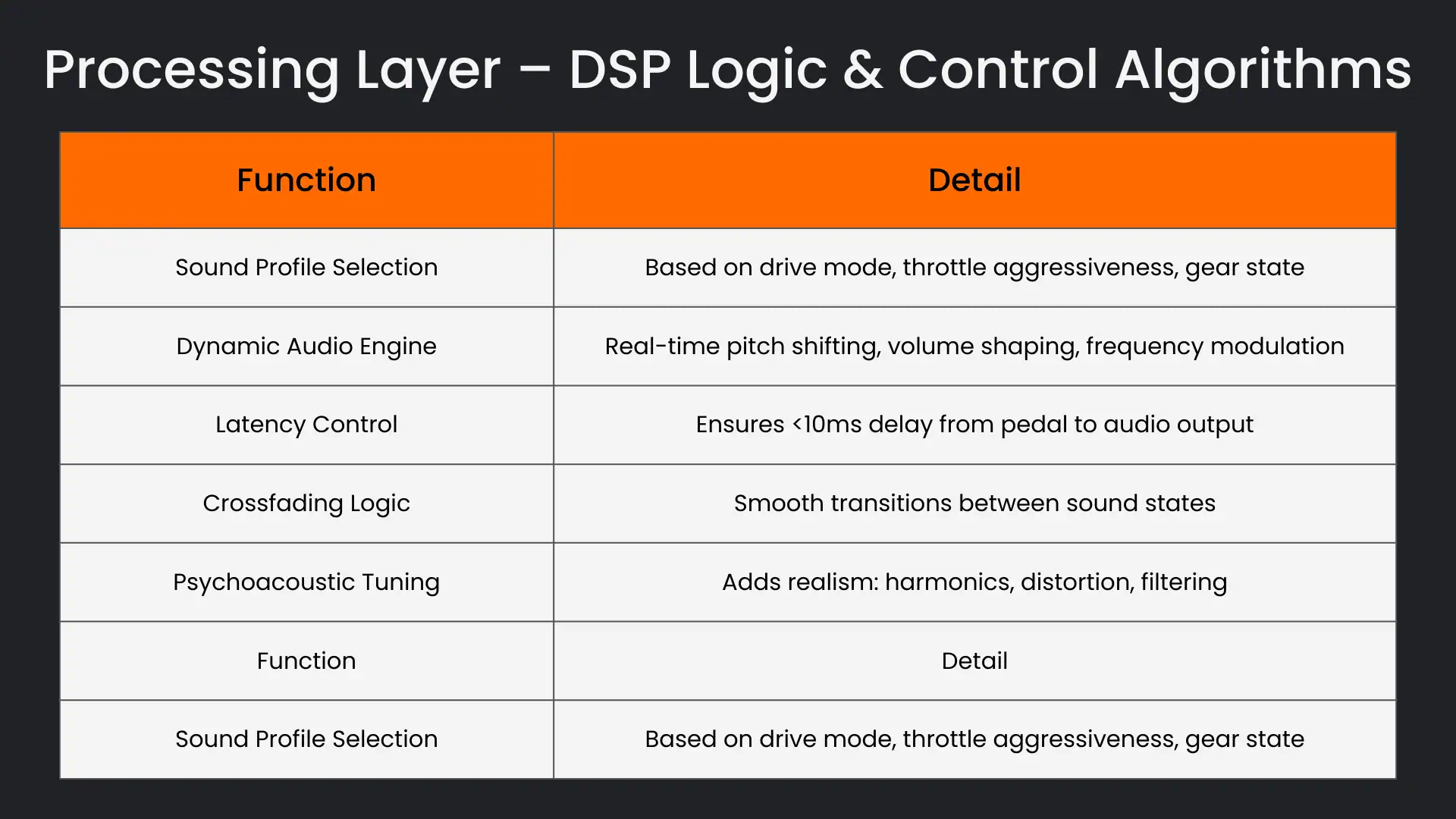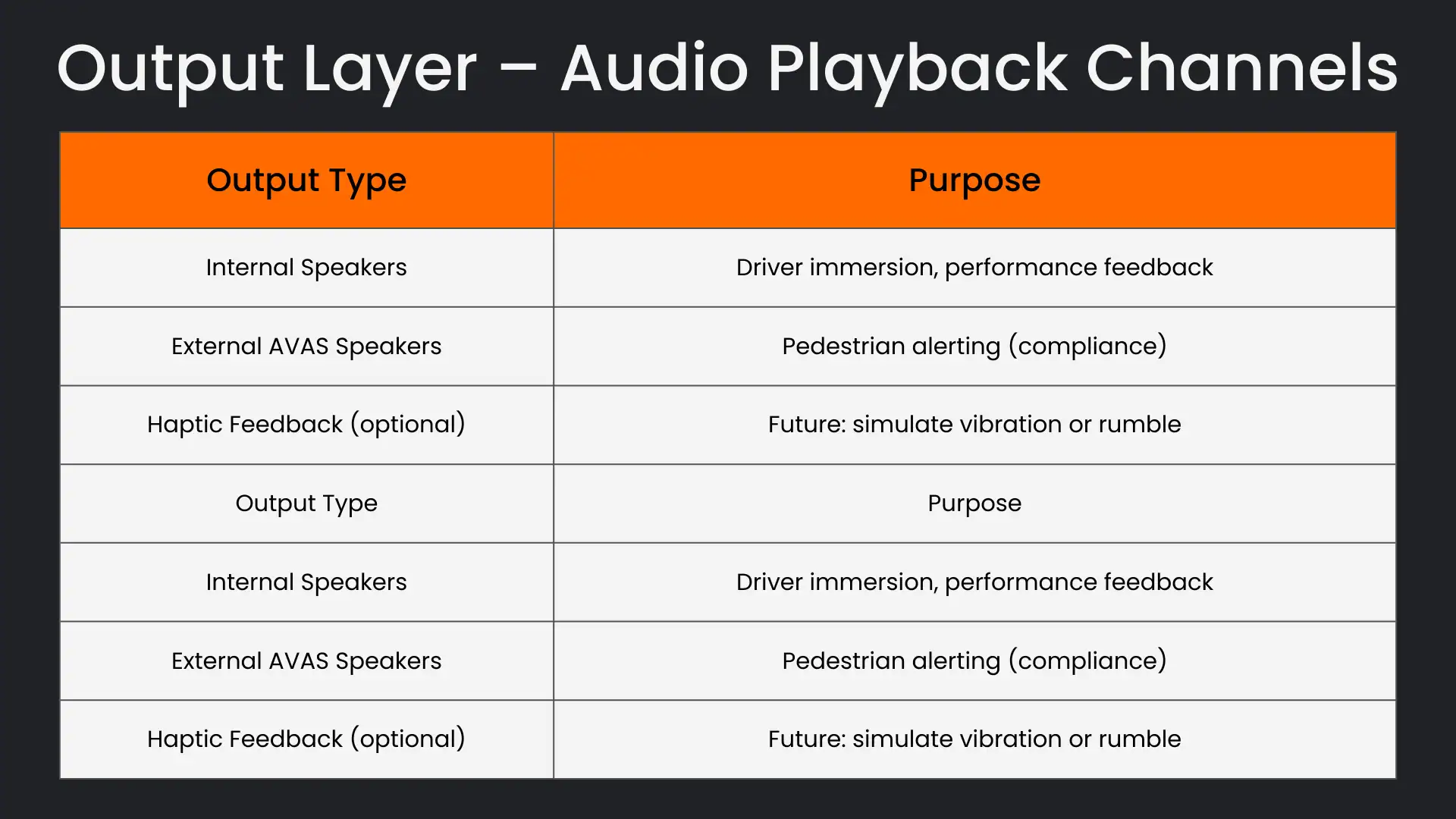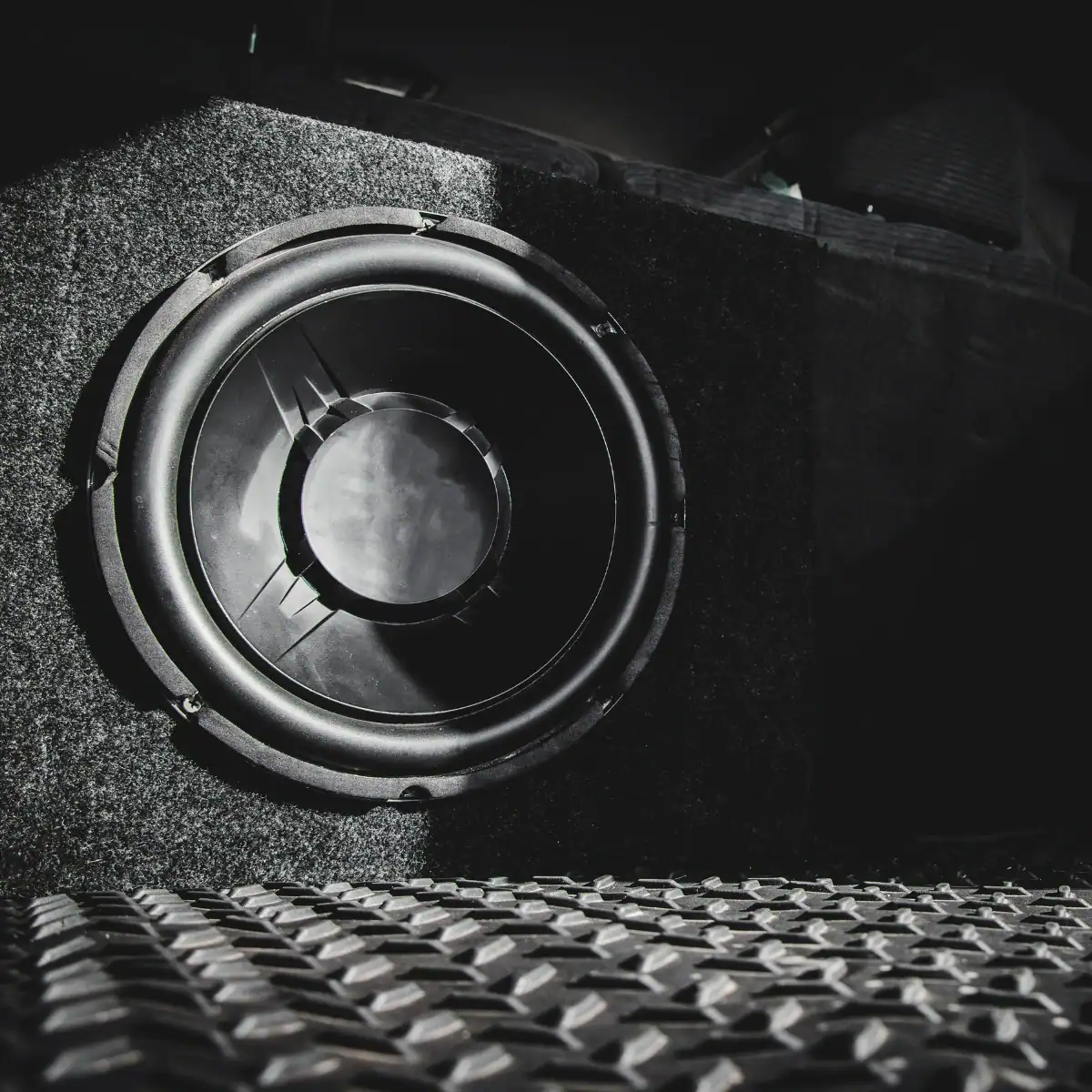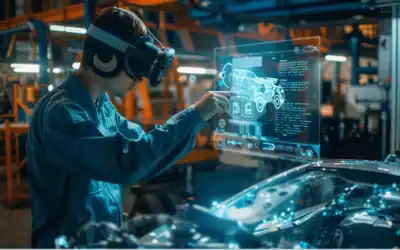Active Sound Design in EVs:
How Engineers Craft the Perfect Electric Engine Roar
The global electric vehicle sound generator market size was valued at USD 1.5 billion in 2024 and is estimated to register a CAGR of 10% between 2025 and 2034.
You know that low, gratifying growl your car makes when you accelerate? In an EV, that noise is only in a Marvel multiverse. That throaty vroom? Engineers and sound designers crafted it by hand in a laboratory somewhere, because silence might be golden, but on the road, it’s just downright spooky.
Welcome to the world of Active Sound Design (ASD), the secret audio alchemy that makes quiet electric vehicles (EVs) sound exciting, futuristic, and sometimes even retro. In this piece, we’re going under the bonnet of: how it’s achieved, why it matters, what it’s like to be an engineer, and how your next project might benefit from a simulated snarl or two.
What is Active Sound Design?
Go techy, but stay cool.
ASD is the use of digitally produced or modified sound to enhance or replicate car sound. It’s essentially your car’s Spotify for engine noise, done with algorithms instead of pistons and fire.
There are three significant types:
Engine Sound Enhancement (ESE): Enhances or re-forms natural engine noises (mainly found on ICE cars).
Synthetic Sound Generation: Generates simulated engine sounds (used on hybrids and EVs).
External Acoustic Vehicle Alerting Systems (AVAS): Mandatory outside noises to alert pedestrians, especially at slow speeds.
For engineers, though, this is not just a case of throwing a subwoofer at the bumper. Coordinating with live CAN bus data, throttle position, gear state is what’s on the table for them.
Sound design and sound engineering is really a fusion of regulatory needs and artistic design.”
—Doug Moore, Global Regulatory Sound and Vibration Engineer at GM
Why Simulate Engine Noise?
Let’s face it: EVs are a eerie silence. That’s nice for your ears, terrible for pedestrians, and confusing for drivers raised to equate noise with speed.
Safety First: Regulation such as the EU Regulation No 540/2014 and US NHTSA regulations require new EVs to produce artificial sound at low speed. ASD systems solve that compliance issue.
Emotional Experience: Human beings are emotional machines. That sub-bass rumble you hear when you rev up a Mustang? It is a form of identity to an autohead. Firms like BMW (IconicSounds Electric) and Porsche (Taycan Electric Sport Sound) know this. They’ve hired composers like Hans Zimmer (yes, him) to compose EV soundtracks. Because if your car don’t growl, do you even own a performance vehicle?
Branding and Differentiation: This audio system helps create a brand personality. A Tesla Model S Plaid would sound like a sci-fi whoosh, and a Dodge Charger EV prototype would sound like a deliberately combative rumble to match its heritage. Marketers and engineers share the same conference rooms now. Ridiculous times.
Engineers use active sound design for electric vehicles to create consistent acoustic feedback for the driver, reflecting driving conditions (acceleration, braking, etc.), which is absent in electrified vehicles.
How Does ASD Actually Work?
This is where things get delicious for engineers.
At the core of ASD system is a blend of:
- Signal processing hardware (usually integrated into the ECU or a dedicated single-purpose DSP)
- Sensor inputs (speed, RPM, throttle, gear, etc.)
- Digital sound models (wave tables, granular synthesis, FM synthesis, etc.)
- Hardware output (cabin speakers, external transducers)
Signal Chain (Simplified):
- Driver presses pedal
- ECU adds input data (speed, torque, drive mode)
- Optimised sound processor picks appropriate sound profile
- Sound processed/generated in real time
- Output sent to internal and/or external speakers
Want a V8 rumble from an EV with four motors? No problem. You just need to replicate the original engine’s harmonics, transients, and feedback loops. and then tune it so it won’t sound like a lawnmower in meltdown.
Product Examples in the Wild
Let’s talk about the outside world.
BMW i4 M50: With Iconic Sounds Electric, it sounds like something out of the future with acceleration noise that grows louder and more defined the faster you drive it. It’s all dramatic storytelling.
Hyundai Ioniq 5 N: Maybe the most over-the-top use of ASD. It has three sound themes: Ignition (ICE-sounding), Evolution (Electric vehicle sound design), and Supersonic (jet fighter). Even gear shifts have been simulated by engineers.
Ford Mustang Mach-E GT : The drive modes change the in-cabin soundscape. Whisper mode? Very quiet. Unbridled mode? Release the digital beast.
All of these are goldmines of signal engineering, psychoacoustics, and car UX.
Before regulators required electric and hybrid cars to play warning noises, studies in the U.S. and Britain found EVs and hybrids were more likely than gas‑powered cars to hit cyclists and pedestrians.
—The Washington Post
The Science of Psychoacoustics
This is where things get strange. ASD makes extensive use of psychoacoustics; how we perceive sound, not what the frequency or amplitude is.
- Frequency masking: You can mask one sound with another.
- Temporal masking: Two sounds occurring close together in time may prevent one from being heard.
- Spatialisation: Where a sound appears to come from can affect how ‘real’ it sounds.
This is why a flat speaker output is never enough. Engineers turn to phase shifting, 3D spatial sound, and even HRTFs (Head-Related Transfer Functions) to mimic the location of engine rumble.
Engineering Challenges (a.k.a. Why Your Head Might Hurt)
- Latency: Any audible lag between pedal push and sound breaks the illusion.
- Speaker Limitations: Most engines sound and speakers aren’t designed for ultra-low frequencies.
- Consistency vs. Adaptability: Should the system adapt to weather, road conditions, or mood?
- Cost & Power Consumption: Extra DSP units and amp power need to be justified in budget and battery drain.
- User Preferences: Some drivers want full immersion; others want peace and quiet.
Good luck pleasing them all.
As soon as you change the sound of cars, you’re going to change how the city sounds.”
—Professor Trevor Cox, acoustic engineering expert
Should You Develop One? (Spoiler: Yes, If.)
If you’re in the business of:
- Developing Electric vehicles or hybrid platforms
- Designing in-cabin experiences
- Satisfying pedestrian safety requirements
Then yes, ASD must be on your radar.
You’ll need to work closely with:
- Sound designers (sometimes actual musicians)
- DSP engineers
- Vehicle dynamics groups
- UX/UI developers (to integrate ASD controls into infotainment systems)
Don’t forget to test with actual people. A golden ear algorithm might sound wonderful in an anechoic room and a rusted vacuum cleaner outside.
Final Thoughts
ASD sure is loud and fake but its existence is critical to automotive engineering. It’s an actual field of audio engineering bleeding into brand identity, user experience, and safety regulation. It flips on its head everything we’ve believed about the symbiotic bond between performance and sound.
And honestly, we’re here for it. The next time someone puts the pedal to the metal in their EV and it sounds like a spaceship, you can bet a team of engineers, sound designers, and DSP algorithms made it possible.
Let’s hope your neighbour’s new Hyundai Ioniq 5 doesn’t wake you up every day with Supersonic mode. Because yes, they did.
Explore more related content
Engineering the Illusion of Space in 3D Audio: Signal Science of Spatial Audio & Psychoacoustics
Engineering the Illusion of Space in 3D Audio: Signal Science of Spatial Audio & Psychoacoustics“We treat the...
RPA in Automotive
RPA in Automotive Manufacturing: From Manual Tasks to Measurable ROI“By 2025, 50% of all RPA deployments will occur in...
AI-Powered Robotics in Automotive: The Manufacturing Advantage No One Can Ignore
AI-Powered Robotics in Automotive: The Manufacturing Advantage No One Can Ignore“Dig into every industry, and you'll...
